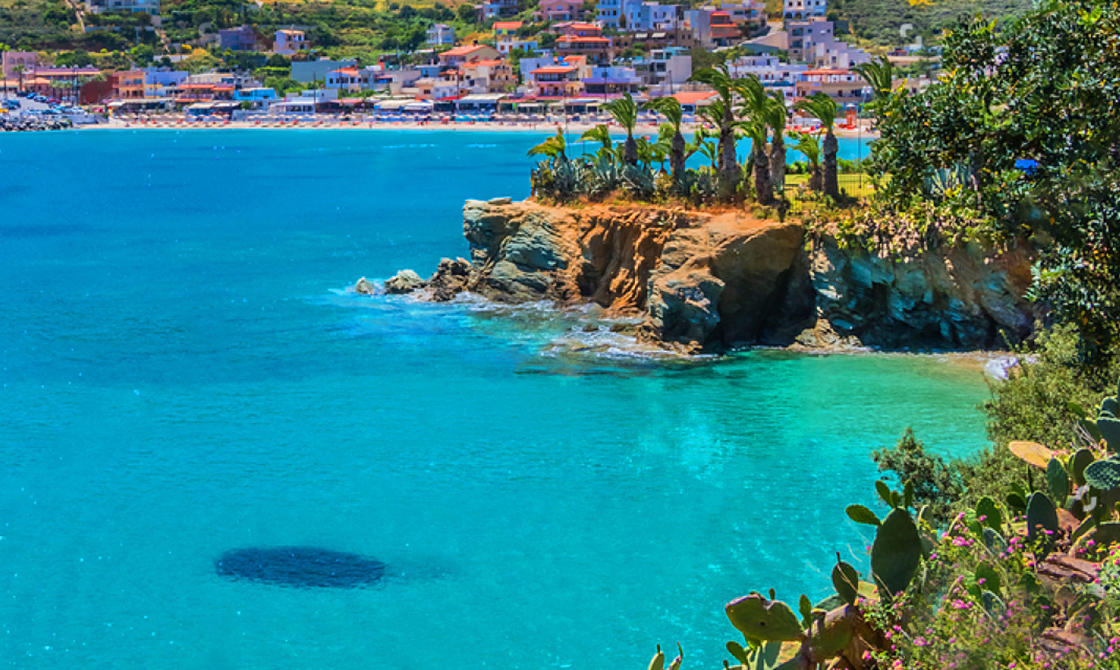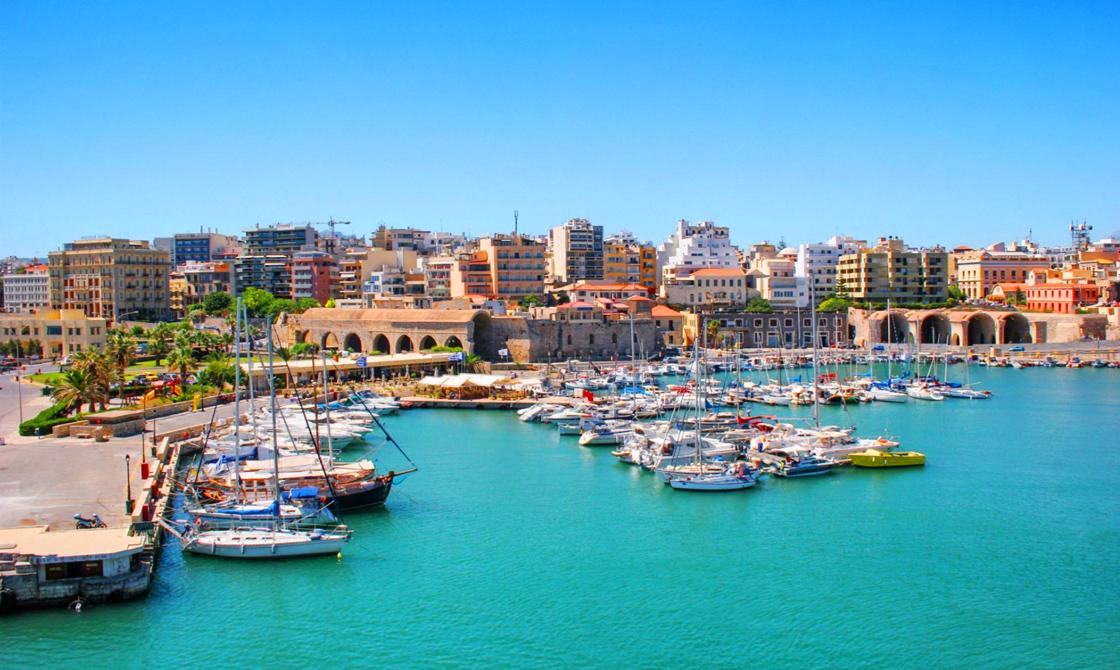
Heraklion
Heraklion, Crete
Intercars car rental was established at Heraklion city center. Heraklion is our home town and as locals we can provide you the best information not only of the city but also of the whole prefecture.
Heraklion town:
Start your day by parking your car in the parking lot next to Marina café at the port of Heraklion. This is a cheap option, as well as the parking lot behind Astoria on Meramvelou street. If you park your car at Heraklion harbor, the walking distance to the center of Heraklion is 5 minutes.
The Venetian Fortress of Koules
The Koules Castle dominates the modern port of Heraklion. It is a massive fortress with two floors that used to guard the entry to the port. The Castle was constructed by the Venetians in the early 13th century, and was called Rocca al Mare, but is now known by its Turkish name, Koules. The Fortress was primarily built for the storage of the foodstuff and the military supplies. It also served as a quarter for the officers and as a prison. A devastating earthquake completely destroyed Koules in 1303 and it was rebuilt by the Genoese. The fortress was again restored during 1523-1540 and got its ultimate form. During the Ottoman rule, the Castle was again turned to a prison. Several Cretan heroes who revolted against the Ottomans had been imprisoned in this castle and had been killed in the dark dungeons.
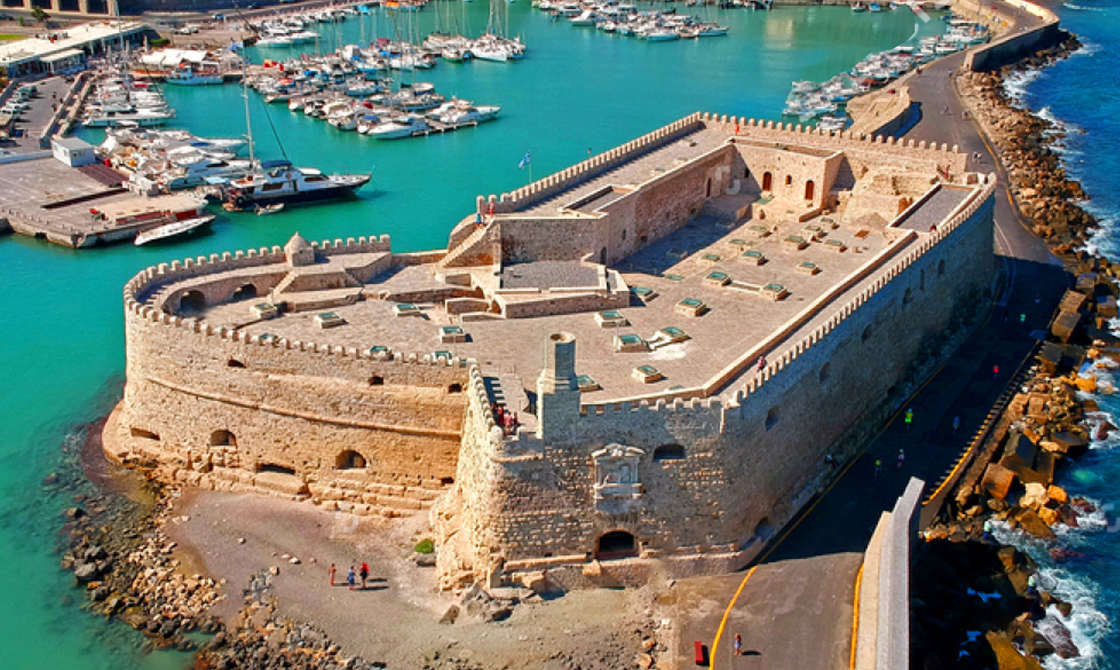
Four Lions Fountain at the center of Heraklion and the Heraklion City Hall.
The Morosini Fountain (Four Lions fountain) is located in Eleftheriou Venizelos Square (commonly known as Lions Square) in the city center of Heraklion, Crete. It is considered to be one of the most attractive Venetian monuments of Khandaka (name of Heraklion of Crete during the Byzantine period) and is preserved in a very good condition. The water comes from the mountain of Juchtas at the village of Archanes with a 15 km aqueduct that reaches Heraklion. The monument is a symbol of the city of Heraklion, Crete. We recommend you to sit by the fountain and enjoy a fresh piece of traditional bougatsa pie and Greek coffee which is offered in a unique blend.
Next to the fountain, in the 25th of August street, you will come across the Heraklion City Hall, which is housed at Loggia, a building that was constructed by Francesco Morosini during the Venetian domination in 1628. It is considered to be one of the most elegant architectural monuments of the Venetian period, a representative example of the Palladian style. During the Venetian period, Loggia was the official meeting place of sovereigns and nobility where they discussed various topics concerning economic, commercial and political matters. It was also used as a place where people passed their time, something like a combination of a chamber and a gentlemen's club. The Loggia we see today is the fourth one; others that were built before this were abandoned due to their position or were made obsolete by time.
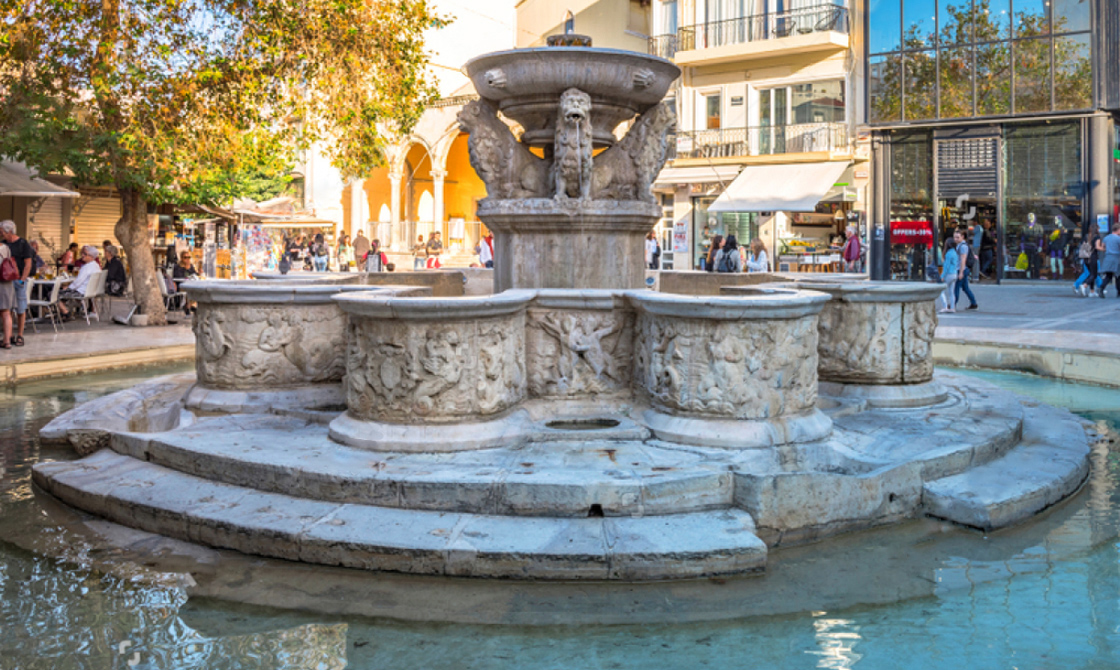
Old Market at 1866 Street
Do not forget to take a walk through the Old Traditional Market of Heraklion which is located in 1866 street. It is a narrow alley lined with tightly packed shops selling all sorts of goods. Known as the Central Market (Agora), it’s only open to pedestrians for safe shopping in Heraklion. You can shop for clothes, souvenirs, fridge magnets, jewellery, linens at rather reasonable prices.
Archeological Museum of Heraklion
The museum of Heraklion is located in the town center and was built in 1937. The Heraklion Archaeological Museum is one of the largest and most important museums in Greece and among the most important museums in Europe. It houses representative artefacts from all the periods of Cretan prehistory and history, covering a chronological span of over 5,500 years from the Neolithic period to the Roman times. The singularly important Minoan collection contains unique examples of Minoan art many of them, true masterpieces. The Heraklion Museum is rightly considered as the museum of Minoan culture par excellence worldwide. In the archeological museum of Heraklion, you can see some of the following exhibits like the Phaistos Disc, the Prince of the Lilies – fresco, the Bull Leaping – fresco, the Snake Goddesses - statuettes, the Gold Bee pendant, the Bull’s – head rhyton etc., all masterpieces of the Minoan Art.
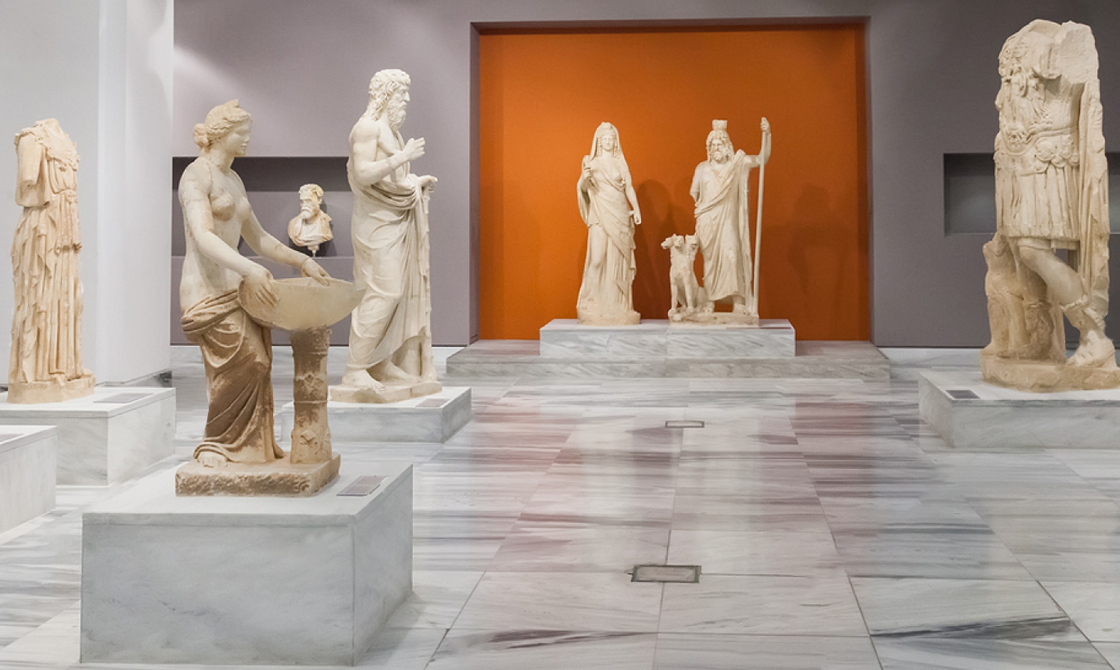
Make sure to visit our main cathedrals, the metropolitan church of Saint Minas and the byzantine church of Saint Titus. Finally, do not miss Nikolaos Kazantzakis's Tomb, which is located at Nicolaou Plastira Street, next to Martinego football pitch and walk along the Venetian walls of Heraklion. The burial place of the Greek writer Nikos Kazantzakis has a wooden cross and an engraved plaque. Nikolaos Kazantzakis was a Greek writer, journalist, politician, poet and philosopher with a rich literary, poetic and translation work. He is recognized as one of the most important modern Greek writers and as the most translated author worldwide.
Agia Pelagia beach
Agia Pelagia is located 20km west of Heraklion and it is a picturesque settlement with beautiful beaches. The main beach is a narrow and long beach with sand & greenish water. The beach offers a variety of options for watersports, diving, umbrellas, food and accommodation. The main beach is protected from the north winds because of its narrow peninsula. From the main beach you can hire a boat or walk on foot along the peninsula and after a few steps you will find yourself above the most beautiful beach of Agia Pelagia, Fylakes (Prison) beach. In order to access Fylakes, you have to go down along the rocky coast that leads to the beach. Fylakes are two tiny golfs with sand and greenish water, sheltered by the tall rocks. Finally, for the history, notice that Agia Pelagia was one of the most important ports in the region during the Venetian period. During the siege of Heraklion (Candia at the venetian period), this port was used to provide help to the sieged Cretans by the Ottomans that tried to capture the island.
